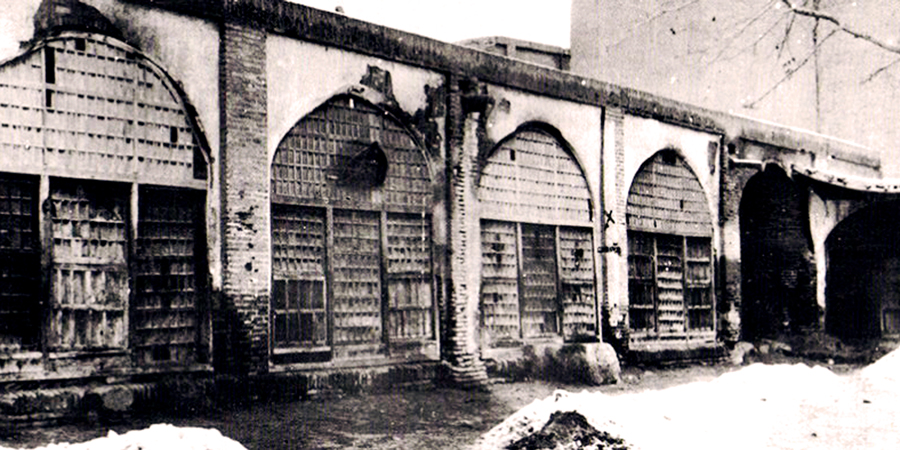IN THIS NEW YEAR,
may you celebrate your birthday
celebrating the sunrise and the sunset
that will shine brightly with your birthday.
May your health increase
exponentially with your wealth
so that you can pay the bill
to get a clean bill of health.
May your blood pressure,
your cholesterol, and your flat lease
never rise,
and may your cheeks,
your teeth, and your stocks
never fall.
May you travel around Mumbai or Manila or Mongkok
during rush hours with ease,
and when you get to Mumbai or Manila or Mongkok
during rush hours with ease,
may you find space to park your car
or space to share your space
with another car.
May you live at peace with your neighbor,
your in-laws, and your colleagues,
and may the person you see in the mirror delight you
and the person others see in you delight them.
May someone love you enough
to accept your faults
and see you beyond your faults
and tell the world the virtues
that he or she has seen.
Above all, may you continue to smile,
and may your days and nights be filled with laughter.
May that laughter quicken the zeal
and rekindle the hopes of the person next to you
and lead that person to laugh and smile with you.
And if grief visits you,
may you rise above it, brave and undisturbed,
ever so confident and trusting
in the abounding grace of God.
May you have
a delightful,
blissful,
prayerful
2007.
Love,
:: Paul A.
Listen to ”Man In The Mirror” performed by Rockapella.

 THE ROOTS of Cesar Buendia's craft lie in his growing years. In the late 1970s and early 1980s, he was one of the most popular figures at the UP Integrated School, running for the student body, writing poetry for the school organ, singing for the UP Cherubim and Seraphim, and appearing in stage plays. Those were also the years of literary talents who wrote screenplays and of avant-garde filmmakers who dared the authoritarian rule of government.
THE ROOTS of Cesar Buendia's craft lie in his growing years. In the late 1970s and early 1980s, he was one of the most popular figures at the UP Integrated School, running for the student body, writing poetry for the school organ, singing for the UP Cherubim and Seraphim, and appearing in stage plays. Those were also the years of literary talents who wrote screenplays and of avant-garde filmmakers who dared the authoritarian rule of government.
 CRITICS HAVE been raving massively about Barbra Streisand's current North American concert tour since it kicked off on 4 October in Philadelphia. The tour showcases the reclusive 64-year-old entertainer on comeback with songs she recorded early in her 46-year-old career. From what I have read in newsgroups and fan sites, the vocal performances are grand, majestic, and wildly applauded.
CRITICS HAVE been raving massively about Barbra Streisand's current North American concert tour since it kicked off on 4 October in Philadelphia. The tour showcases the reclusive 64-year-old entertainer on comeback with songs she recorded early in her 46-year-old career. From what I have read in newsgroups and fan sites, the vocal performances are grand, majestic, and wildly applauded.

 We were friends back at the Bahá'í World Centre in Israel, getting together on weekends at my flat over irreverent Hollywood DVDs and home-made dinners with the rest of the gang (Ailsa Hedley, Behi Sobhani, Behrooz Behboodi, Kurt Austria, Romina Bahrami, and Sharon Marnell). I spoke to the couple through the mobile phone of my sister-in-law Tara, who attended the wedding with my brother Allan. (“He is your twin!”, Kevin laughed about Allan.) I told them how the gang chatted in MSN a month back and spoke about their wedding. “I wish you were all here, it's so (mild expletive) beautiful,” said the groom.
We were friends back at the Bahá'í World Centre in Israel, getting together on weekends at my flat over irreverent Hollywood DVDs and home-made dinners with the rest of the gang (Ailsa Hedley, Behi Sobhani, Behrooz Behboodi, Kurt Austria, Romina Bahrami, and Sharon Marnell). I spoke to the couple through the mobile phone of my sister-in-law Tara, who attended the wedding with my brother Allan. (“He is your twin!”, Kevin laughed about Allan.) I told them how the gang chatted in MSN a month back and spoke about their wedding. “I wish you were all here, it's so (mild expletive) beautiful,” said the groom.



